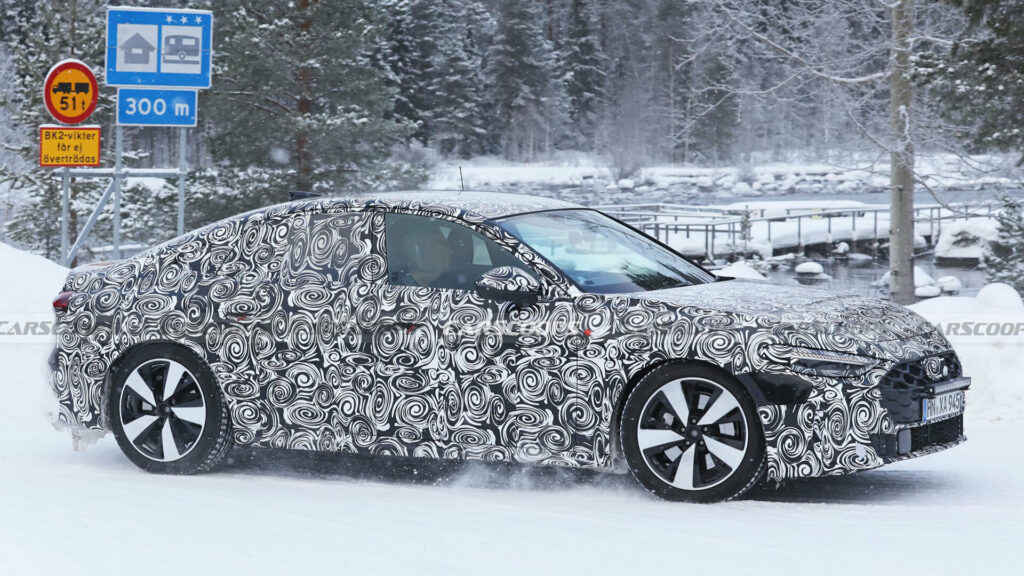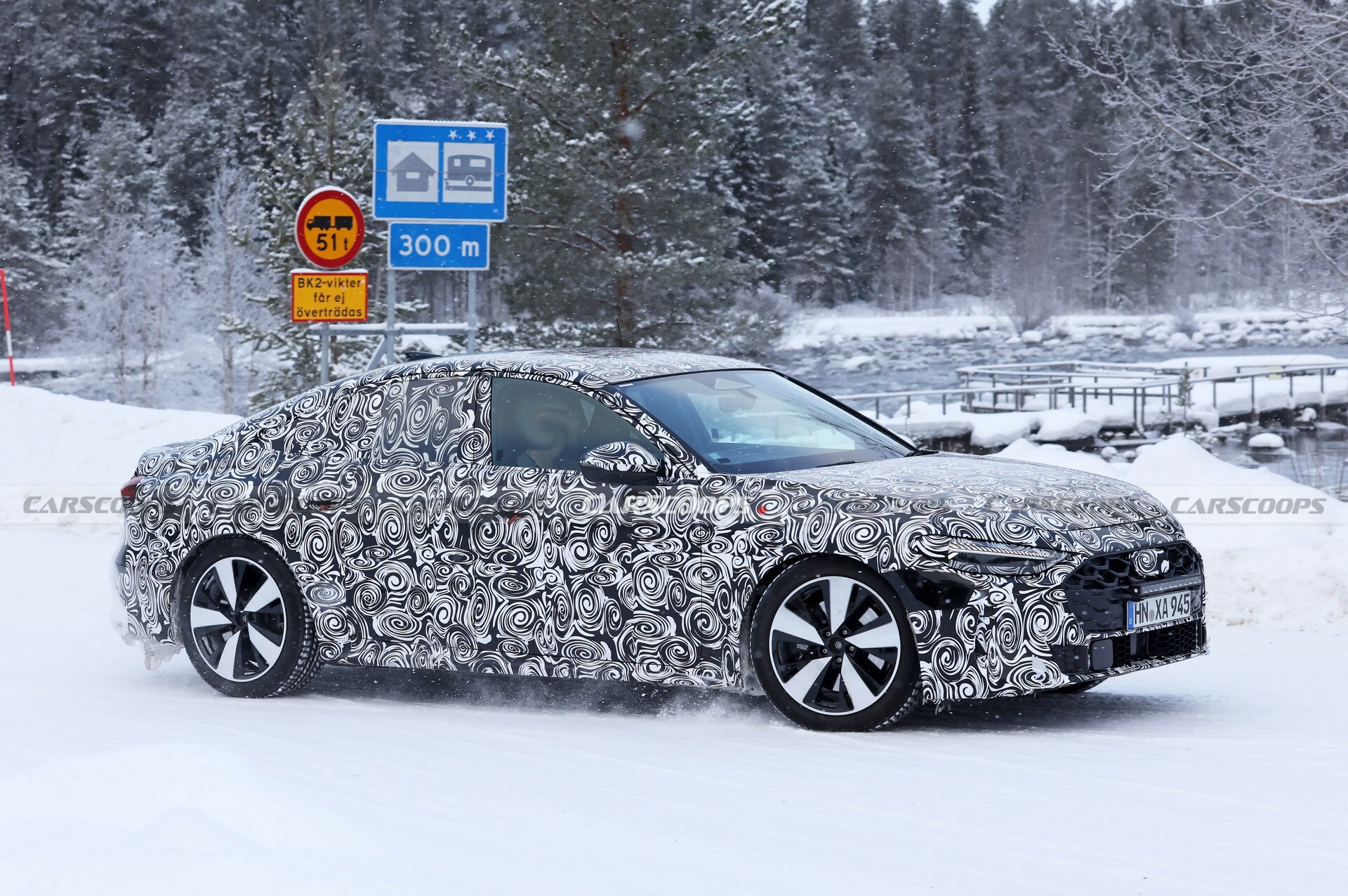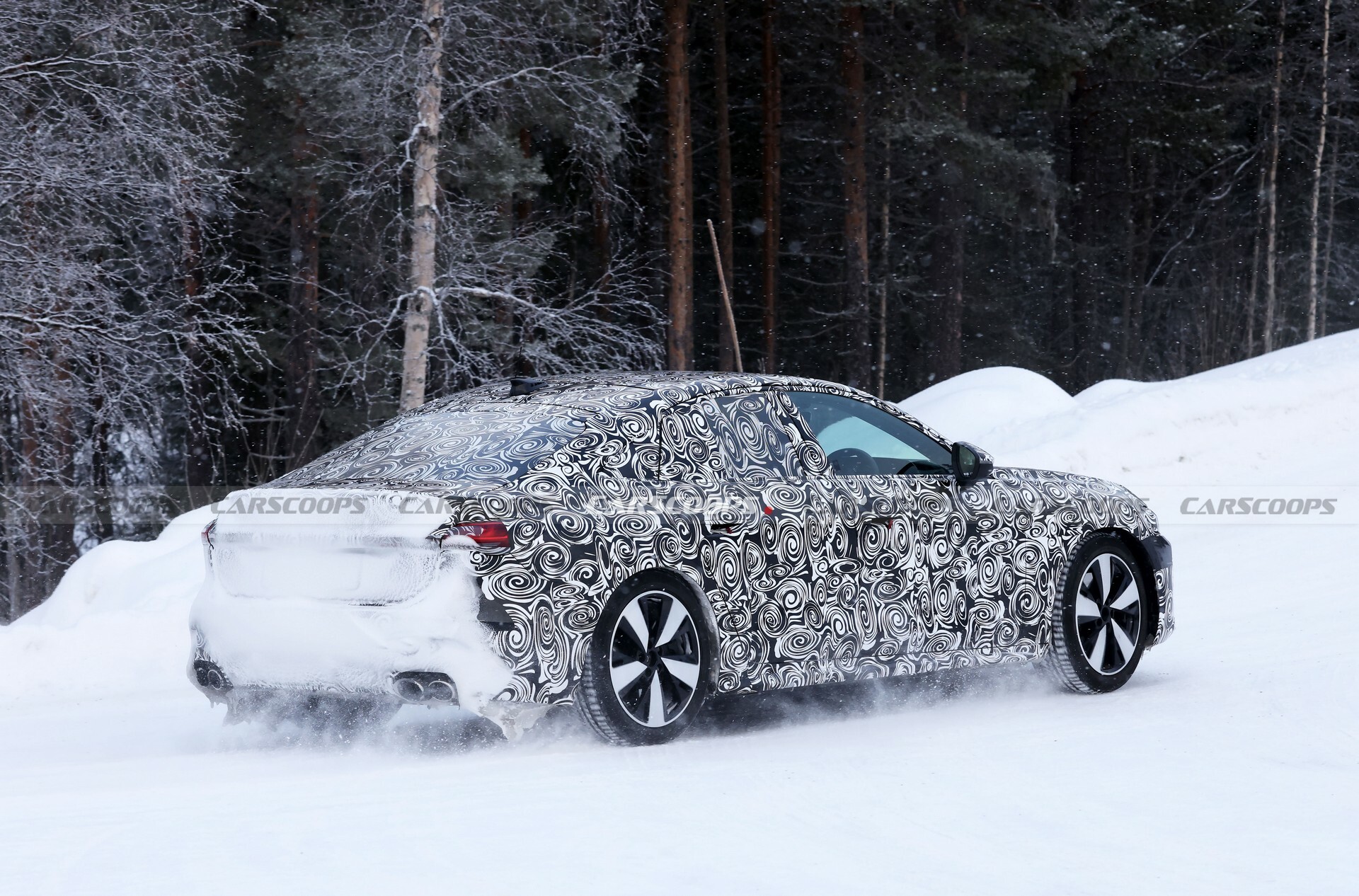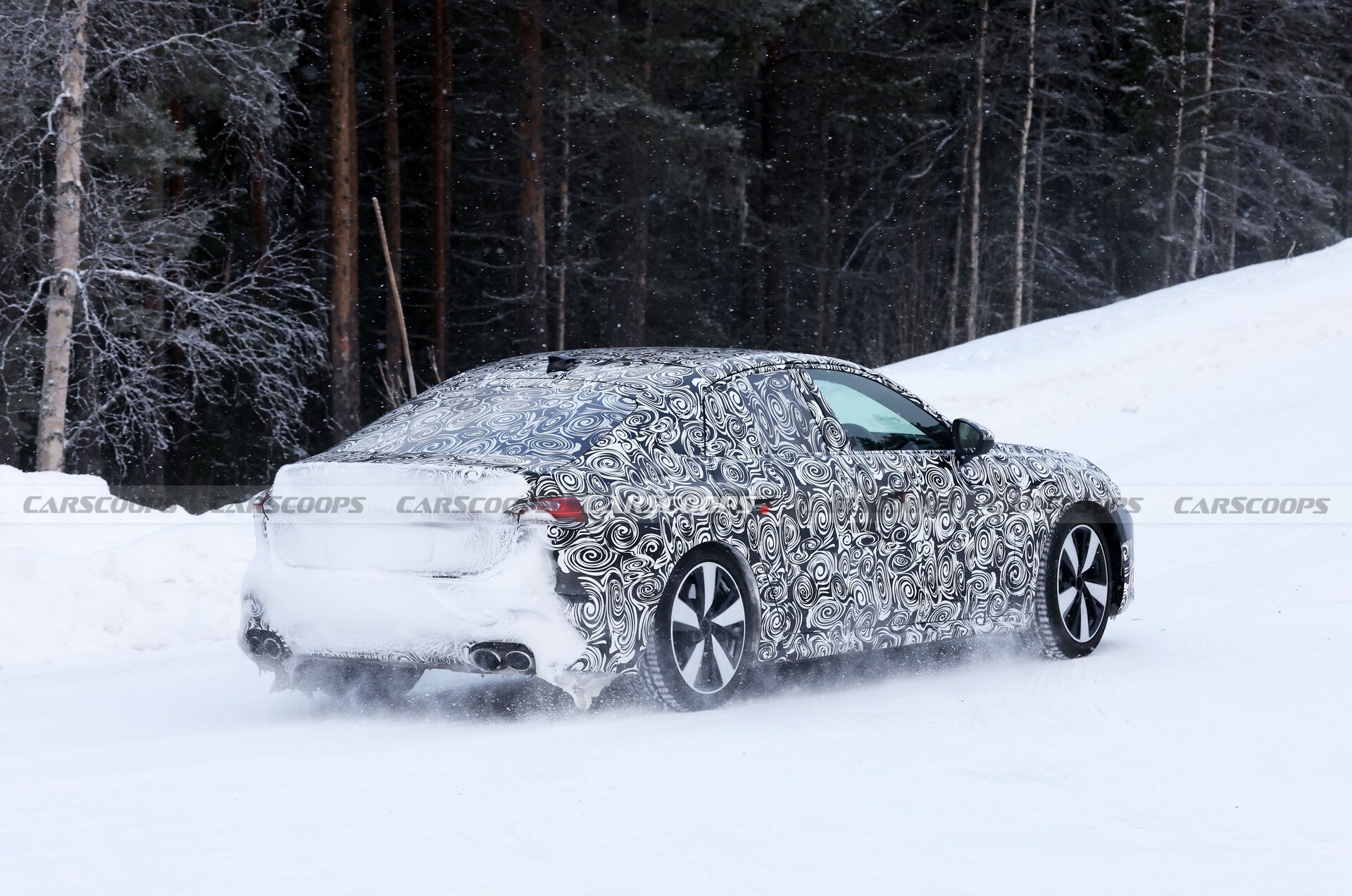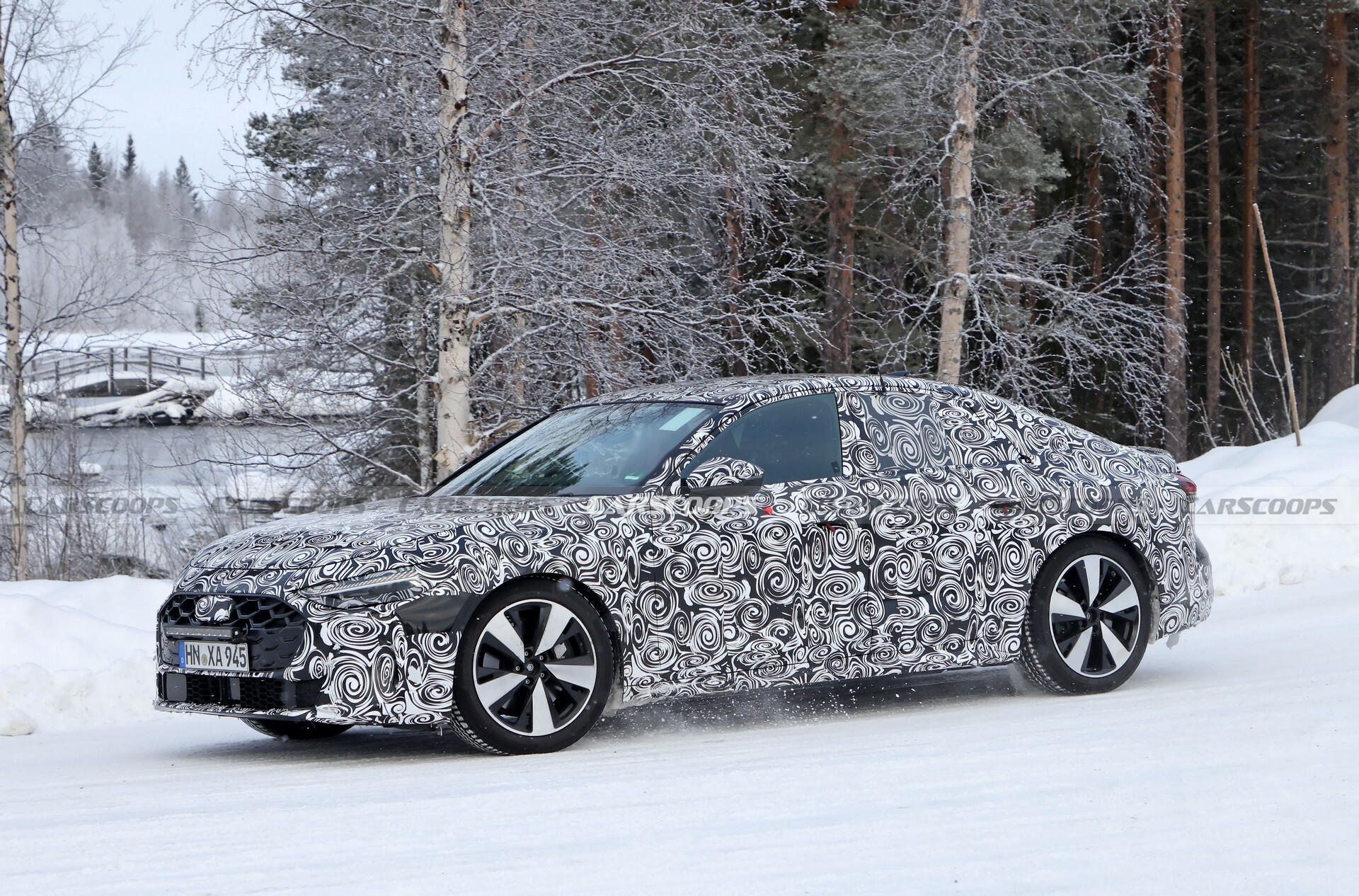Spy photographers caught the Audi S5 Avant undisguised last spring and now we’re getting another look at the Sportback variant.
Set to serve as a replacement for both the S4 sedan and current S5 Sportback, the redesigned model is heavily disguised but adopts a shorter and wider grille that is flanked by sweptback headlights. We can also see an aggressive bumper, which features vertical air curtains as well as a larger central intake.
Moving further back, there’s streamlined styling and new flush-mounted door handles. They’re joined by an upward sweeping beltline, a gently sloping roof, and what appears to be a familiar greenhouse.
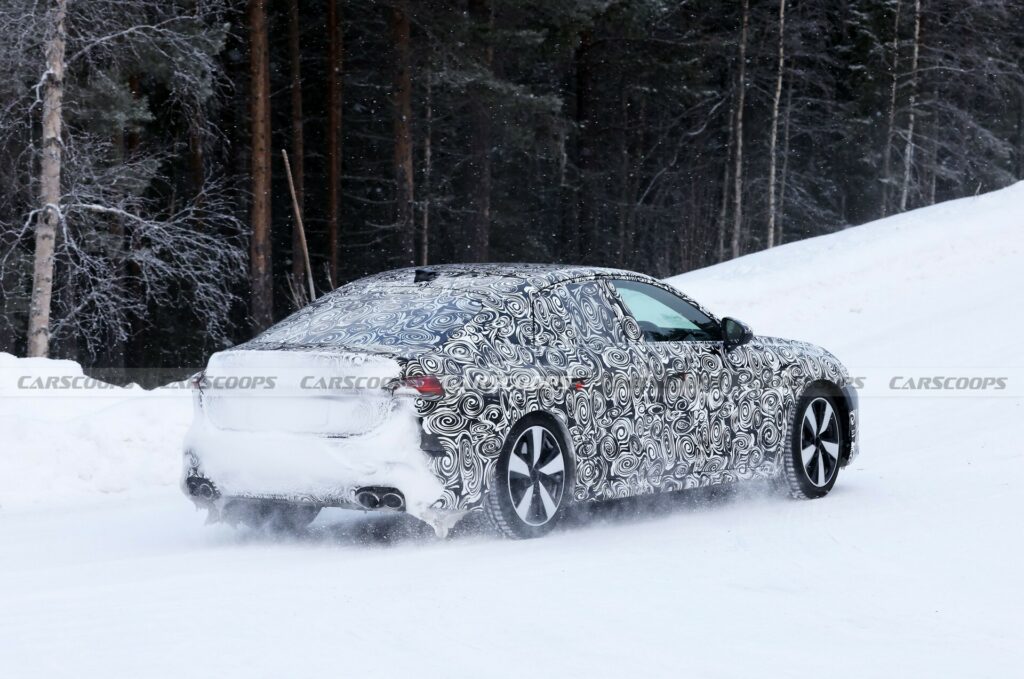
The rear end is partially obscured by snow, but we can see slender taillights that appear to be connected by a thin illuminated strip. The car also sports a rounded rear bumper and a familiar four-tailpipe exhaust system.
Spy photographers didn’t get a look inside, but previous photos have shown the car will have a freestanding digital instrument cluster and a larger infotainment system. We can also expect a new flat-bottom steering wheel and a minimalist shifter.
More: 2025 Audi A5 Avant Prototype Drops Camo, Shows Off Slimmer Grille, New Lights
Audi has been tight-lipped about the model, but it’s expected to ride on an updated version of the current MLB Evo platform. It’s known as the Premium Platform Combustion (PPC) and it has been developed with electrification in mind.
That being said, the European variant will reportedly use a familiar 3.0-liter TDI V6. It currently develops 337 hp (251 kW / 341 PS) and 516 lb-ft (700 Nm) of torque, which enables the S5 Sportback to accelerate from 0-62 mph (0-100 km/h) in 4.6 seconds before hitting a limited top speed of 155 mph (250 km/h).
Less is known about the US-spec model, but the current car has a turbocharged 3.0-liter V6 with 349 hp (260 kW / 354 PS) and 369 lb-ft (500 Nm) of torque. It’s connected to an eight-speed automatic transmission and a standard quattro all-wheel drive system, which enables the model to run from 0-60 mph (0-96 km/h) in 4.5 seconds.




